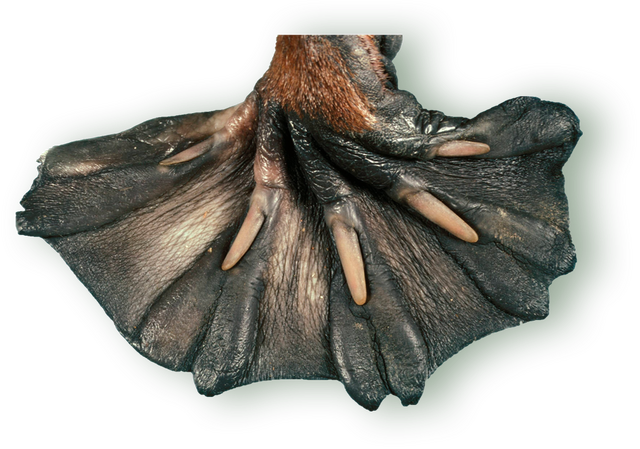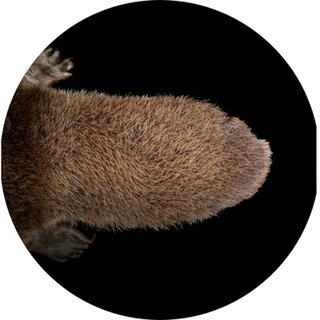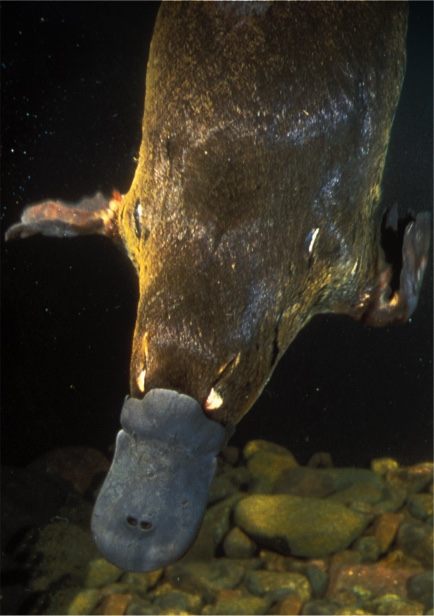IntheSwim
Shapedlikeafurryfootball,theplatypusisaskilledswimmer.Itsshapehelpsitdivedeepandslicethroughthewaterquickly.Itsfrontwebbedfeethelptheplatypuspaddle.Thebackfeetare used,withthetail,forsteeringand braking.
Theplatypusmayfeelmostathomeinthe water.
Thisplatypus'sbigwebbedfeethelppropelitthroughthe water.
Theplatypus’s feethelpitbothonlandandin water.

front foot
TransformerToes
Thefrontfeetofaplatypusarebuiltforbothwaterandland.Inthewater,extraskinbetweenthetoescreatesapaddle.Onland,thewebbingispulledbacktousetheclawsto dig.
The backfeetareremarkable,too.Inwater,platypusesusetheirbackwebbedfeettosteerandbrake.Onland,theyusetheirbackclawsforgrooming.Maleplatypuseshaveanothersurpriseintheirbackfeet.Hollowspikesareloadedwitha venomforwhentheyfight others.


Maleplatypuseshavehollowspikesontheirbackheels.Theyarefilledwith venom.

Theplatypus’stailhelpsitswim.Italsostores fat.
TaleofaTail
Thoughitlookslikeabeavertail,aplatypustailisnotusedforpaddling.Thetailisastoragetank.Itcanholdalmosthalfoftheanimal’sbody fat.
NowSeeThis
Aplatypus’seyeshavelotsofcellstotakeincolor.Yet,itdoesnotuseitseyesforhunting.Instead,thesecellsareusedonlandtospot predators.
Whenitdivesdeep,aplatypusclosesitseyes.Sincethefuronitseyelidsislight,itlookslikeitseyesglowinthe dark!
Theseadaptationshavebeenshapedovermillionsofyears.Thismishmashmammalisasurvivalsuccess story!

Lighterfuronitseyelidsmakethisplatypus’seyesseemtoglowwhenclosed underwater.
